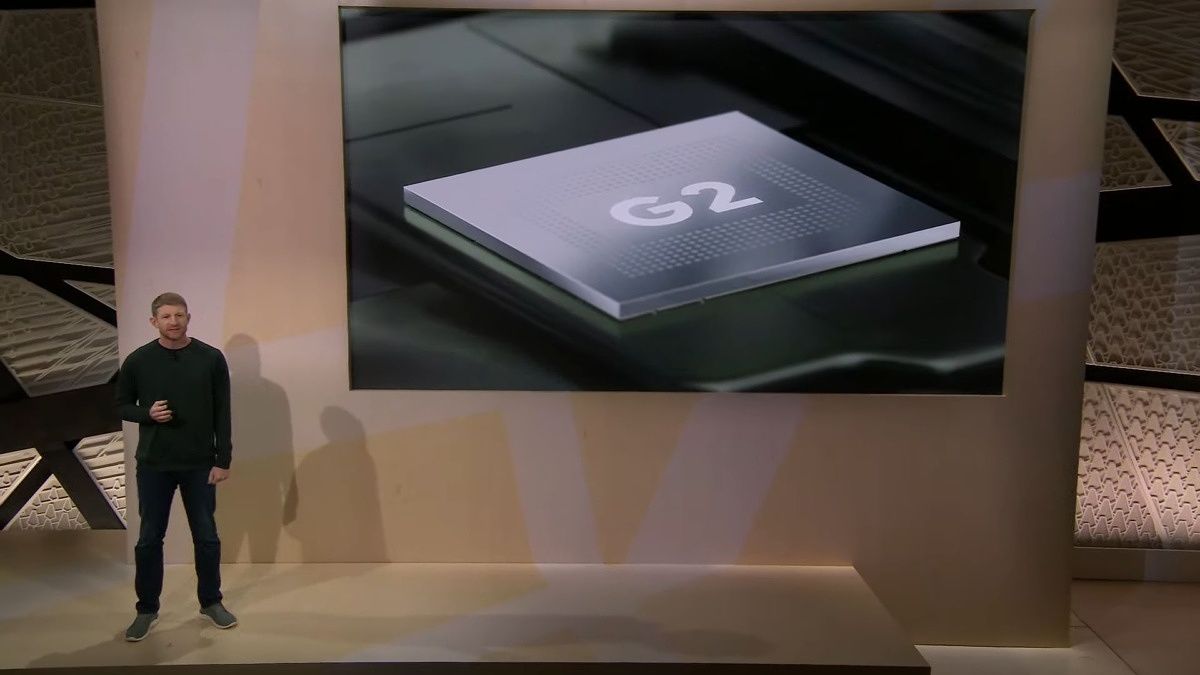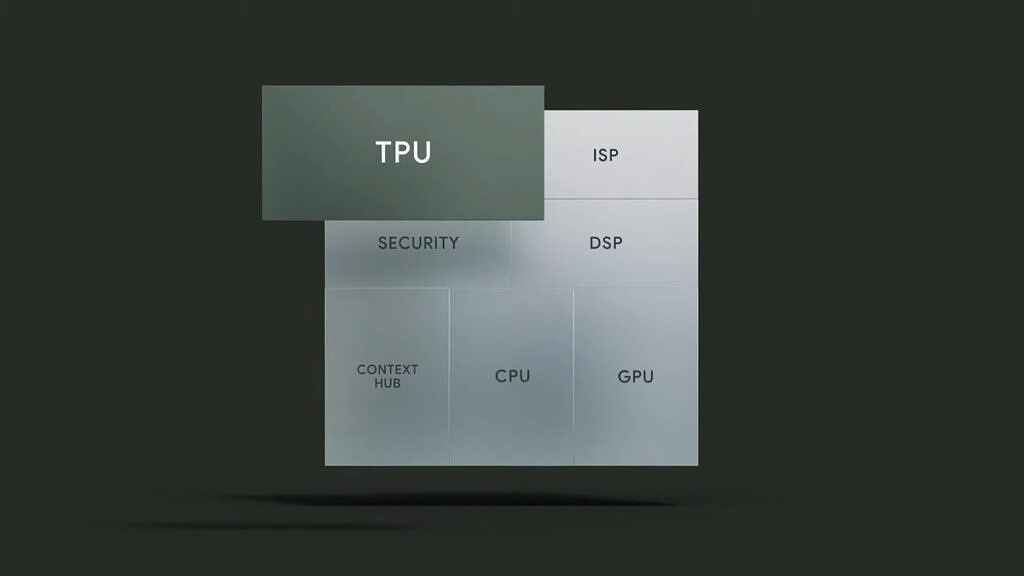The Google Pixel 7 is here, and with it comes a number of notable improvements across the board. However, one of the most exciting improvements comes in the form of the chipset, as it's the heart of any smartphone. Google's Tensor in last year's Pixel was pretty good, though had a number of issues. This time around, the company has said to improve battery life and other areas in Tensor G2, and the specifications are basically an iteration of Tensor from last year.
Google Tensor G2: Specifications
|
Specification |
Google Tensor G2 |
Google Tensor |
|---|---|---|
|
Big Cores |
2x Cortex-X1 @ 2.85GHz |
2x Cortex-X1 @ 2.8GHz |
|
Medium Cores |
2x Cortex-A78 @ 2.35GHz |
2x Cortex-A76 @ 2.25GHz |
|
Little Cores |
4x Cortex-A55 @ 1.8GHz |
4x Cortex-A55 @ 1.8GHz |
|
CPU L3 Cache |
4MB |
4MB |
|
System Level Cache (SLC) |
8MB |
8MB |
|
GPU |
ARM Mali G710 MP07 |
Mali G78 MP20 |
|
TPU |
Next-Generation Custom Edge TPU |
Custom Edge TPU |
|
DSP |
Yes |
DSP |
|
ISP |
10-bit HDRGoogle HDRnet108MP ZSL4K60 video |
8-bit HDRGoogle HDRnet4K60 video |
|
Context Hub |
Yes |
Yes |
|
Security |
Tensor security coreCertified M2 security chipCPU virtualizationTrusty OS on TrustZone5 years of security updates |
Tensor security coreCertified M2 security chipCPU virtualizationTrusty OS on TrustZone5 years of security updates |
|
DRAM |
LPDDR5 |
LPDDR5 |
Google Tensor G2 doubles down on the same CPU formula as Tensor
Comparing both of these chipsets reveals a lot of similarities, with the basics of each set of cores being retained. Google is still keeping its somewhat abnormal 2+2+4 setup and has opted instead to slightly buff the clock speeds of the big and medium cores. In theory, this means that Google will have an advantage in performance in any application that uses two threads for processing, though it depends on how quickly it throttles or not.
Google bumped up the middle cores to a pair of A78 cores as well, which is a very welcome change. It was puzzling last year that Google had opted for a pair of A76 cores given that they are both worse in power efficiency and worse in performance than the A77 and the A78. This should hopefully see some clear performance and efficiency boosts, thus improving battery life as well.
Finally, the same four little cores are kept as on last year's Tensor. There's no real change here.
Overall, while it would have been nice to see a complete jump to Armv9 (with a Cortex X2, A710, and A510 trio), that would have required a large redesign on Google's part, especially given that this is a modification of a design that was already a modified Exynos design. Maybe next year?
Google Tensor G2's GPU has a pretty nice upgrade
Google Tensor G2 makes a pretty big upgrade in the GPU department, jumping up from the Mali G78 MP20 to the Mali G710 MP07. The Mali G710 MP07 is a similar GPU to the one that's in the Dimensity 9000, though there are likely modifications given the "MP07" suffix. For reference, the MediaTek Dimensity 9000 has a Mali G710 MC10. It's likely that "7" refers to the number of cores (as it does in the case of the original Tensor) but we'll have to wait and see.
However, the improvements in the Mali G710 come not just from the core count, but the actual structure itself. It promises major improvements not just in graphics, but in Vulkan performance especially. We'll need to wait and see how much these improvements come to fruition, but in theory, there should be much better performance not just in gaming and other graphics-intensive tasks, but even in emulators like AetherSX2.
Last time around, the 20-core beast of the G78 in Tensor, while powerful, only really retained that power for several seconds before beginning to throttle. It maintained high frequencies to start with, but the high energy usage and heat generated as a result was a major issue. Seeing Google dial it down a bit and lean into a much more normal GPU configuration for mobile does give hope.
Google Tensor G2 TPU Improvements
Google is advertising that Tensor G2's TPU is "next generation", improving on what was already an impressive addition to the Tensor SoC last year. Last year, Google's Tensor chipset had references to an "edgeTPU" in drivers. If it's the same Edge TPU that the company advertises in its cloud platform and in Coral devices, then it's capable of 4 TOPS at just 2W of power.
In the case of Google Tensor G2, Google says that the TPU is both 60% more powerful and 20% more efficient. Those are some pretty big improvements given that what the Edge TPU was capable of, assuming it was the same, was already pretty good. It powers features like Photo Unblur and Cinematic Blur.
Google Tensor G2 improves the fundamentals
Google Tensor G2 looks like it could be a pretty nice chipset, but we don't know if it's enough to improve on where Tensor fell last year. We still don't know much about the modem or its capabilities, but leaks have suggested that it, too, is improved.
We're looking forward to getting our hands on Tensor G2 to see how much these improvements actually come to fruition.

Google Pixel 7
The Pixel 7 packs the second-gen Tensor SoC, a brighter display, and improved cameras.

Google Pixel 7 Pro
The Pixel 7 Pro is Google's top-of-the-line flagship of the year, featuring the second-gen Tensor SoC, a 120Hz LTPO display, a telephoto sensor, and a bigger battery.


